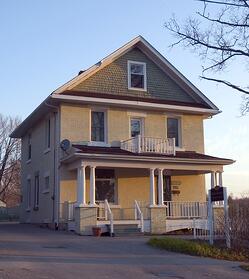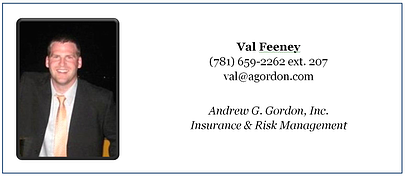- 781-659-2262
 Investment properties are purchased by individuals to make a profit. That profit is usually realized 5, 10, 15, or 30 years after the purchase date depending on how the financing has been setup. During this ownership period, the property needs to be adequately insured against fire and other destruction. Obtaining a comprehensive insurance policy will allow an owner to rent out his or her investment properties with confidence. It’s “sleep easy at night” coverage.
Investment properties are purchased by individuals to make a profit. That profit is usually realized 5, 10, 15, or 30 years after the purchase date depending on how the financing has been setup. During this ownership period, the property needs to be adequately insured against fire and other destruction. Obtaining a comprehensive insurance policy will allow an owner to rent out his or her investment properties with confidence. It’s “sleep easy at night” coverage.
If the property is a multi family (2-4 family) and you, as the owner, live in one of the units, then you can use the tried, true, and tested HO-3 homeowners policy (with a few tweaks) to cover the entire building, its contents, and your liability exposure.
However, if you, as the owner, do not live at the property, you will need the proper Dwelling & Fire Policy to cover the building properly. The most popular of the policies is the DP-3.
The DP-3 is an “open Peril” policy that covers losses to the home’s structure, loss of use or rental coverage, and personal liability.
If the multi-family owner has an HO-3 on the property and lives elsewhere, they will NOT be covered for any losses by the insurance company. This is considered a material misrepresentation of facts. Most rental properties that are not owner-occupied must be insured under a DP-3.
Homeowners’ Policy(HO-3) |
Dwelling & Fire Policy
(DP-3) |
|
The HO-3 has been the most common homeowner’s policy for 60 years and is adequate for the majority of homeowners and their insurance needs. |
The DP-3 is for rental properties that the owner does not occupy. It only covers the basics of the house. |
|
Coverage A. Dwelling. The amount of money your policy will pay to rebuild your home if it is destroyed. |
Coverage A. Dwelling. The amount of money your policy will pay to rebuild your home if it is destroyed. |
|
Coverage B. Other Structures. The amount of money your policy will pay to rebuild other structures on your property such as sheds & patios. |
|
|
Coverage C. Personal Property. The amount you have to replace all of your “stuff” in the event of a loss. |
|
|
Coverage D. Loss of Use. The funds you will have to rent another place while your damaged home is fixed or rebuilt. |
Coverage D. Loss of Use or Fair Rental Value. The funds you will have for the tenants to rent another place or stay at a hotel while your damaged house is fixed or rebuilt. |
|
Personal Property Replacement Cost. Ensures you get the full price to fix or replace any lost personal items in a total loss. |
|
|
Coverage E. Personal Liability. In the event that you become a defendant in a lawsuit, the insurance company will provide up to $1 Million is coverage. |
Coverage E. Personal Liability. In the event that you become a defendant in a lawsuit, the insurance company will provide up to $1 Million is coverage. Especially important for rental properties. Not all DP-3 policies offer Personal Liability and the insured may have to get a separate Liability Policy for this protection. |
|
Coverage E. Medical Payments to Others. If someone falls and is injured on your property, the medical payments will be covered up to this amount. |
NOTE: If the insured owns a primary home and has personal liability on that homeowner’s policy, he/she can extend the liability to cover the rental (multi-family) property. |
|
Optional Coverages & Endorsements. There are many additional coverage items you can add to your HO-3 such as sewer backup, personal jewelry, identity fraud coverage, business pursuits, etc. |
 |

We are local insurance experts serving the South Shore for over 70 years.
Click below to get a free quote for your personal or business insurance.